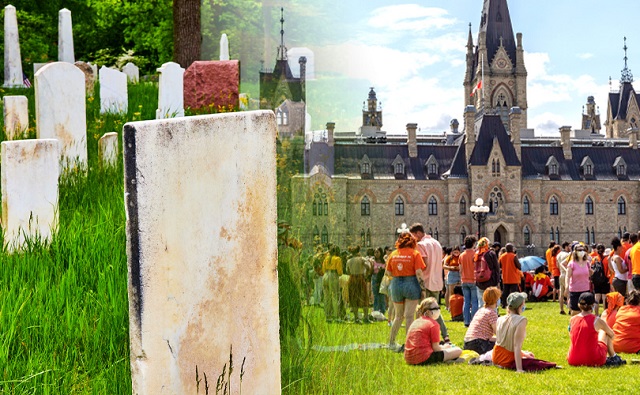Crime
Ireland vows to crack down on ‘hate speech’ after knife attack by Algerian immigrant

Senator Pauline O’Reilly
From LifeSiteNews
By Paul Bennett
‘We are restricting freedom for the common good,’ Ireland’s Green Party Senator Pauline O’Reilly told the Irish Senate
The Irish government have blamed recent unrest on the “far-right” and vowed to fast track freedom-curbing “hate speech” legislation before Christmas.
The November 23 riots were in response to a barbaric knife attack on innocent children and a daycare employee in central Dublin by a 50-year-old Algerian immigrant earlier that day. Leanne Flynn and three children were wounded.
Addressing the nation at Dublin Castle after the stabbings, Irish Taoiseach Leo Varadkar crudely prioritized legislating hate speech laws to tackle the growing public unrest in Ireland over key issues such as mass immigration.
“It’s now obvious to anyone who might have doubted it that our incitement to hatred legislation is just not up to date for the social media age and we need that legislation through,” Varadkar said.
“And we need it through in a matter of weeks because it’s not just the platforms that have responsibility here, and they do, it’s also the individuals who past messages and images online that stir hatred and violence. We need to be able to use laws to go after them individually.”
As a result of a coordinated government response to tackle ‘hate speech’, the Republic of Ireland’s new Online Safety Media Commission have urged the Irish public to report any “hate speech” to the Gardai (Irish police) in the aftermath of last week’s unforeseen stabbings and riot in Dublin.
The newly established Irish online media regulator approved by the European Commission, Coimisiún na Meán, is currently overseeing what is being billed as online safety in Europe in a move to tackle hate speech and disinformation.
Immediately after the November 23 riot, the online regulators made Ireland the first EU member state to activate an alert under new Digital Services Act (DSA) rules. The activation alerted the European Commission to contact large social media companies within hours of the riot in Dublin, to remind them of their legal obligations regarding dissemination of illegal online content, threats, hate speech, and “disinformation.”
On November 28, Minister for Tourism, Culture, Arts, Gaeltacht, Sport and Media Catherine Martin told the Irish parliament that online regulators are “calling for those who see hate speech or other illegal content online to report it to platforms or to the Gardai.”
Following last week's Dublin riots, which started after multiple young children were stabbed at school, Ireland's new Media Commission is calling on the public to report any "hate speech" they see online to the police.
Comments by Irish Media Minister Catherine Martin. pic.twitter.com/TeF4wDjqCH
— gript (@griptmedia) November 29, 2023
In the midst of growing tension and concern about mass immigration, housing, and crime in communities across the country, the Irish government are instead planning to pass legislation to curb freedom of speech. The new Hate Speech Bill is considered one of the strictest draconian hate speech legislations in the world.
The Criminal Justice (Incitement to Violence or Hatred and Hate Offences) Bill 2022 (the Hate Speech Bill) will criminalize any speech that is “likely to incite hatred, or violence” against so-called “protected groups.”
The legislation vaguely defines “hatred” as “hatred against a person or a group of persons in the [Irish] State or elsewhere on account of their protected characteristics.” The protected characteristics includes race, nationality, gender, sexual orientation, and religion.
The radical bill outlines how merely possessing “hateful” content on your devices or having signs, posters and banners that could incite “hatred” could lead to criminal charges and upwards to five years of imprisonment.
Authorities will be allowed to seize all electronic devices, including phones, laptops, and tablets, and force individuals to hand over passwords, even if no crime has been committed.
Independent Irish Senator Sharon Keogan believes the main objective of the hate speech bill is “partly designed to keep political dissenters quiet.”
In a viral video that got international attention, a Green Party Senator called Pauline O’Reilly revealed the true nature of the radical hate speech laws during a discussion about the proposed legislation in the Irish Senate.
"We are restricting freedom for the common good": Irish Green Party Senator Pauline O'Reilly says that her government's hate speech bill is about "restricting freedom," and censoring views on gender identity if those views create "discomfort."#gript pic.twitter.com/H7QIT0QHmf
— gript (@griptmedia) June 15, 2023
“When you think about it, all law, all legislation is about the restriction of freedom. That’s exactly what we are doing here,” she said. “We are restricting freedom, but we are doing it for the common good.”
On social media platform, X, Ohio Senator James David Vance reacted to the viral video of the Irish Senator by saying if this was in “Russia, or China or many other nations we would call it totalitarian and threaten economic sanctions.”
Elon Musk, owner of X has called the planned legislation a “massive attack against freedom of speech.”
The Hate Speech Bill was passed in the Irish Parliament in April 2023 and is currently now at a committee stage in the Senate.
Crime
The US Canadian border: Greatest number of terrorist watch list individuals being apprehended at northern border

A Border Patrol agent standing watch at the Montana-Canada border in the CBP Spokane Sector. The Spokane Sector covers the U.S.-Canada border along the northwestern section of Montana, part of Idaho, and the eastern part of Washington.
From The Center Square
Lack of operational control at northern border poses national security threats
The northern border largely has been unmanned and understaffed for decades as federal reports issue conflicting conclusions about how much, or how little, operational control exists.
Some officials have suggested the U.S. Department of Homeland Security has just 1% operational control over the northern border after a 2019 General Accounting Office audit of U.S. Customs and Border northern border operations. But a December 2022 DHS report claimed, “The Border Patrol is better staffed today than at any time in its 87-year history,” noting no surveillance of extensive parts of the northern border existed prior to 9/11.
After 9/11, several federal agencies were combined to fall under the newly created Department of Homeland Security. Within 20 years, roughly 950 miles along the U.S.-Canada border from Washington to Minnesota, and roughly 200 miles along the northern border in New York and Lake Ontario, were under unmanned aircraft surveillance. None of these areas “were covered prior to the creation of DHS,” DHS says, meaning the northern border was largely unprotected since Border Patrol’s founding in 1924.
In 2012, DHS released its first unified department strategy for U.S.-Canada border security, prioritizing “deterring and preventing terrorism and smuggling, trafficking, and illegal immigration; safeguarding and encouraging the efficient flow of lawful trade, travel, and immigration; and, ensuring community resiliency before, during, and after terrorist attacks and other disasters.”
Within 10 years at the northern border, more than 2,200 Border Patrol agents were stationed between ports of entry; nearly 3,700 CBP officers were stationed at ports of entry; more than 35 land ports of entry were modernized; and thermal camera systems, mobile and remote video surveillance systems had been deployed.
Havre Sector Border Patrol agent patrolling northern border on an ATV. The Havre Sector covers the U.S.-Canada border along most of Montana’s northern border, and includes part of Idaho and all of Wyoming, Colorado and Utah.
Despite these improvements, “the northern border is under-resourced by far compared to the southwest border,” former Border Patrol chief Mark Morgan told The Center Square. “But at the same time, it still represents significant threats. Cartels are expanding their operations, flying people into Canada, which doesn’t require a visa, presenting an opportunity for terrorist watch-listed individuals to exploit. It’s much easier to get to Canada to come across.”
“Data from 39 months shows terrorist watch-listed individuals are coming here every day and they aren’t stopping,” Morgan added.
For years and prior to the current border crisis, there weren’t enough personnel to cover all shifts, and the infrastructure, technology and equipment afforded to them didn’t compare to those at the southwest border, he said. People can easily drive snow mobiles over frozen territory or boats across the Great Lakes in areas that are unmanned, Morgan said, with a previous policy of self-reporting to authorities.
“The northern border represents a threat,” Morgan said. Noting it only took 19 men to carry out the 9/11 terrorist attacks, Morgan has warned that a terrorist threat is already in the U.S. No one knows how many terrorist watch-listed individuals have illegally entered who weren’t caught, multiple officials have told The Center Square.
While much attention has focused on the southwest border, the greatest number of known or suspected terrorists to ever be apprehended in U.S. history were at the northern border in fiscal 2023, breaking fiscal 2022’s record, The Center Square first reported.
This fiscal year through April, the greatest number of KSTs (known or suspected terrorists) continue to be apprehended at the northern border, 143 so far, according to CBP data.
Potential terrorist threats are not new and have persisted for some time, federal reports indicate. One Border Patrol intelligence report says terrorist threats potentially come from “foreign violent extremists to exploit established alien smuggling routes and networks for the purpose of evading detection en route to the United States.”
Other threats include drug smuggling from Canada into the U.S., connected to “criminal groups with known ties to or hired by Mexican drug trafficking organizations” and human smuggling. In the last few years, human smuggling attempts and apprehensions have significantly increased, The Center Square has reported.
The Center Square first began reporting on northern border national security threats several years ago. Since then, apprehensions of illegal border crossers in the first six months of fiscal 2024 were the highest on record. In the busiest sector of Swanton, Border Patrol agents recently apprehended more people in one week than they did in all of fiscal 2021.
Last month, they apprehended more than 1,400 illegal border crossers, more than they did in fiscal years 2021 and 2022 combined, Swanton Sector Chief Border Patrol Agent Robert Garcia just announced, saying it was “another record-breaking milestone in northern border history.”
This is after they apprehended more than 6,700 in fiscal 2023, more than the apprehensions of the previous 11 years combined, The Center Square first reported.
The U.S.-Canada border is the longest international border in the world of 5,525 miles. Unlike the U.S.-Mexico border, there are no border walls or similar barriers along the U.S.-Canada border. Through DHS, CBP officers are tasked with border security at ports of entry and Border Patrol agents between ports of entry along 4,000 miles. The U.S. Coast Guard, working with CBP’s Air and Maritime Operations, covers maritime security.
Crime
Slovakian prime minister who opposed WHO Pandemic Treaty shot in assassination attempt
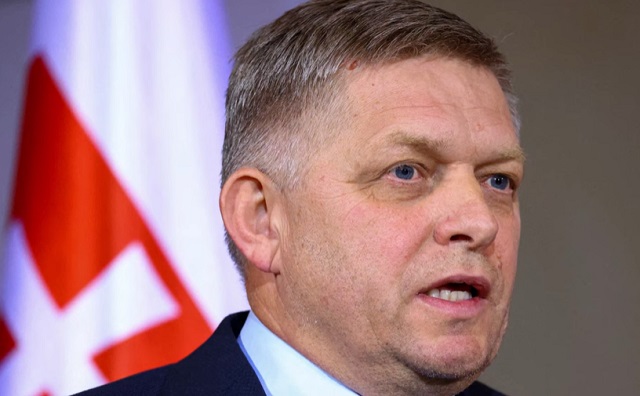
From LifeSiteNews
Slovakia recently announced that it would not support the WHO’s pending Pandemic Agreement, which Robert Fico has described as ‘nonsense’ that ‘could only be invented by greedy pharmaceutical companies.’
Slovakia Prime Minister Robert Fico, an outspoken opponent of the World Health Organization’s (WHO) pandemic accord, is “fighting for his life” after he was shot five times in an assassination attempt on Wednesday.
🚨 🇸🇰 Breaking: Slovakia
The Prime Minister of Slovakia Robert Fico has just been shot in public.
This comes only days after Fico formally & publicly rejected The WHO Global Pandemic Accord ‼️ pic.twitter.com/QIZOgGQCyE
— Concerned Citizen (@BGatesIsaPyscho) May 15, 2024
Fico is undergoing surgery while the gunman, who has not yet been publicly identified, is in custody, according to government officials. According to Slovakia Defense Minister Robert Kaliňák, Fico’s medical state is “extraordinarily serious,” and his surgery has been ongoing for at least 3 1/2 hours.
The assassination attempt, which occurred as he was leaving a government meeting, comes only a few days after Slovakia announced that it would not support the WHO’s pending Pandemic Agreement, including the new International Health Regulations (IHR) in the proposal. Slovakia’s health minister declared the country would not sign any agreements weakening the nation’s sovereignty, according to Radio Slovakia International.
In November, Fico referred to the Pandemic Agreement as “nonsense” that “could only be invented by greedy pharmaceutical companies, which began to perceive resistance from some governments against mandatory vaccination,” Euractiv reported.
The WHO’s Pandemic Agreement, which has a May 2024 signing deadline, has been widely denounced as a threat to the national sovereignty of WHO member nations by giving the WHO greater power over the countries in the case of a declared public health emergency. All 49 Republican U.S. Senators have signed a letter urging the Biden administration to reject the WHO agreements, “or at least submit any agreement to the Senate as a treaty.”
Two international agreements are being considered at this month’s World Health Assembly that surrenders U.S. sovereignty to the WHO. @POTUS should reject them, or at least submit any agreement to the Senate as a treaty.
The entire Senate GOP conference has signed onto my… pic.twitter.com/a3IBoE2DeD
— Senator Ron Johnson (@SenRonJohnson) May 2, 2024
During an appearance on Tucker Carlson’s podcast in January, liberal intellectual Bret Weinstein argued that the WHO is gearing up for a “re-run” of COVID-19 in order to set up a “totalitarian planet.” He noted that the agreement is being modified so the WHO will have even more power to crack down on voices that dissent from Big Pharma’s narrative.
Fico won a third term in October after running a campaign critical of Western support for Ukraine, and his government has already halted arms deliveries to the war-torn country, according to the Associated Press. He previously served as prime minister of Slovakia from 2006 to 2010 and from 2012 to 2018, holding a record as the longest-serving prime minister in the country’s history.
Fico has been acutely critical of the mainstream media as well as globalist billionaire George Soros, known for funding the radical left. In November 2021, Fico described journalists as “Soros’ corrupt gang of swines for whom water is already boiling.”
-
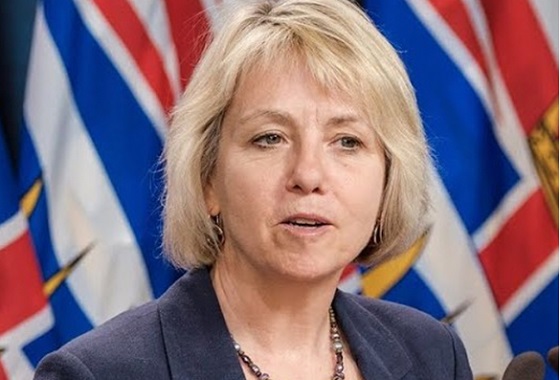
 COVID-192 days ago
COVID-192 days agoHealthcare workers obtain partial win against Bonnie Henry in BC Supreme Court
-

 Alberta2 days ago
Alberta2 days agoFortis et Liber: Alberta’s Future in the Canadian Federation
-

 Canadian Energy Centre2 days ago
Canadian Energy Centre2 days agoTrans Mountain completion shows victory of good faith Indigenous consultation
-
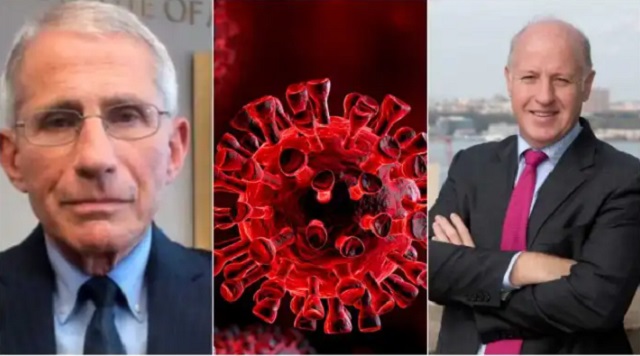
 COVID-191 day ago
COVID-191 day agoCOVID Lab Leak: Over four later, EcoHealth Alliance funding is finally suspended
-

 COVID-192 days ago
COVID-192 days agoElon Musk-backed doctor critical of COVID response vows appeal after court sides with medical board
-

 COVID-191 day ago
COVID-191 day agoNIH Quietly Altered Definition For Gain-Of-Function Research On Its Website, Former Fauci Aide Confirms
-
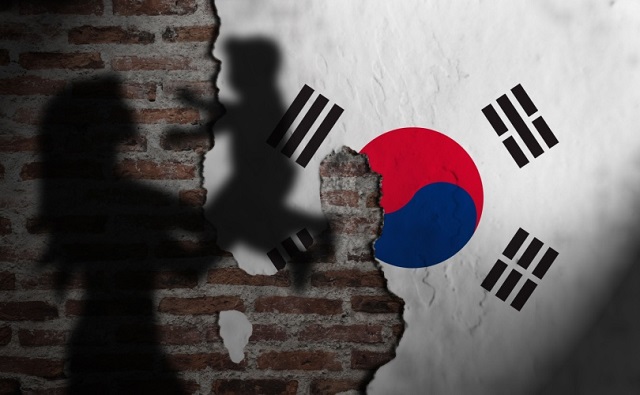
 Health2 days ago
Health2 days agoSouth Korean president declares low birth rate a ‘national emergency,’ plans new ministry to address it
-

 Health2 days ago
Health2 days agoUK pediatrician who led review of child ‘transitions’ says US medical groups ‘misleading the public’





